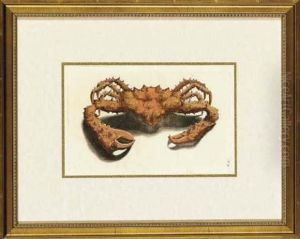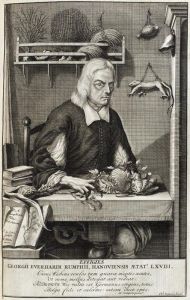Georg Eberhard Rumpf Paintings
Georg Eberhard Rumpf, more commonly known as Georg Eberhard Rumphius, was a German-born botanist and naturalist whose work laid the foundations for future botanical exploration, particularly in the Dutch East Indies. Born on June 1, 1627, in Wölfersheim, Hesse, Rumphius joined the Dutch East India Company and traveled to the Spice Islands (now part of Indonesia) where he dedicated himself to the study of the local flora and fauna.
Rumphius settled in Ambon, an island in the Maluku archipelago, in 1657. Despite facing numerous personal tragedies, including the loss of his wife and daughter to a tsunami, and becoming blind, he continued his scientific work with the help of assistants. His blindness did not deter his scholarly pursuits; he dictated his observations to scribes and published significant works, most notably 'Herbarium Amboinense,' which cataloged the plant life of the island of Ambon and surrounding areas. This monumental work was not published until after his death, due to various setbacks, including a devastating earthquake that destroyed his manuscripts, which had to be rewritten from memory.
Rumphius is also known for his work 'D'Amboinsche Rariteitkamer' ('The Ambonese Cabinet of Curiosities'), which documented the region's natural history, including shells and other marine life. His contributions to science went largely unrecognized during his lifetime, but his detailed descriptions and classifications laid important groundwork for future taxonomists, including Carl Linnaeus, who often referred to Rumphius's work. Rumphius's dedication to his research in the face of adversity left a legacy that continues to be admired in the scientific community. He passed away on January 15, 1702, in Ambon.

